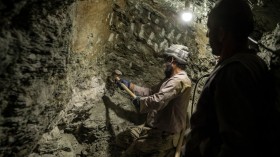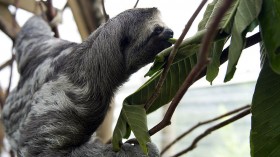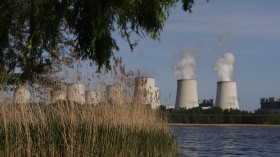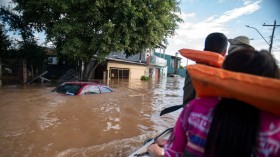People living around Mount Sinabung on Indonesia's western island of Sumatra are grappling with displacement and threats of ash, smoke and lava as the volcanic mountain continues to erupt.
Sinabung has erupted sporadically since September, and the current episode of volcanic activity has been ongoing since the beginning of the year. On Jan. 1, the volcano erupted 22 times in roughly 12 hours, and in the week since there has been sustained volcanic activity on Singbung. Over the weekend the volcano erupted another 77 times in a 24-hour span across Saturday and Sunday.
A photo dated Jan. 7 shows lava streaming down the mountain and thick smoke billowing from the top, suggesting that the volcanic activity has been ongoing for at least a week.
"This outpour is the biggest we've seen in all the recent eruptions," Indonesian National Disaster Mitigation Agency (BNPB) spokesman Sutopo Purwo Nugroho said, according to an APF report posted Jan. 4.
Following the intense volcanic activity over the weekend, more than 20,000 people - in excess of 6,300 families - have been displaced. Residents within a 5-kilometer radius of Sinabung have been ordered to evacuate, and the BNPB has instructed local authorities to prepare for a "worst-case scenario," which would require expanding the evacuation zone between 7.5 km and 10 km.
Displaced people are being housed in evacuation centers. The volcanic eruption has resulted in no reported casualties, but 11 people have died so far since the eruption began after contracting diseases in the evacuation camps, according to the Wired volcano blog.
In a separate report, Nugroho told The Jakarta Post that there were at least 60 pyroclastic flows running from the volcano's crater, stretching as long as 5 km down the slope of the mountain. The volume of the pyroclastic flows in increasing every day, Nugroho told The Jakarta Post.
Prior to 2010, Mount Sinabung - a 2,400-meter-tall stratovolcano - had been quiet for hundreds of years. Following the 2010 eruption, the volcano has been sporadically erupting, most notably in September and November of 2013 and again in January.
© 2024 NatureWorldNews.com All rights reserved. Do not reproduce without permission.





